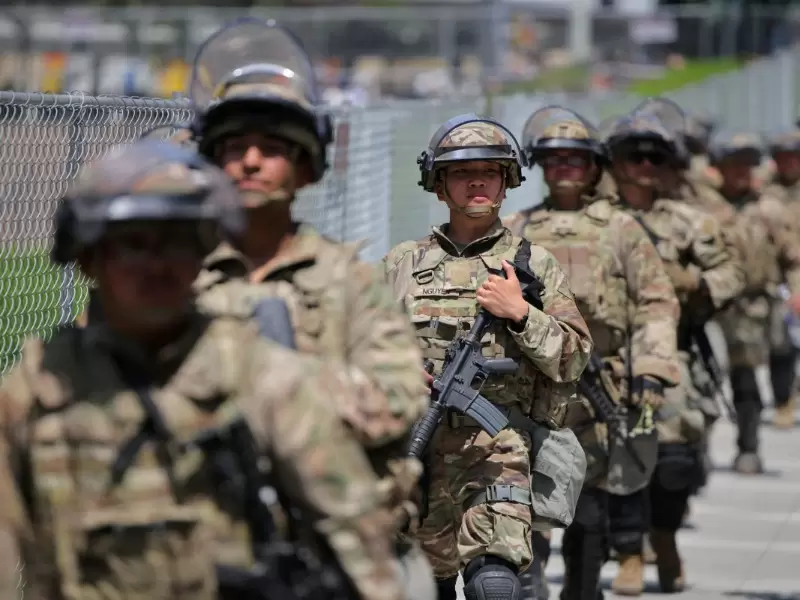Indian-origin engineer develops wearable tech to detect brain injury
Kesari is heading a 10-member team that is developing devices like sensor-laced helmets and impact-detection harnesses.
.jpeg) Haneesh Kesari (left) helps postdoctoral researcher Yang Wan to don the accelo-hat, which helps to measure forces in the brain associated with rapid head movements. / Photo by Cherie Daniel
Haneesh Kesari (left) helps postdoctoral researcher Yang Wan to don the accelo-hat, which helps to measure forces in the brain associated with rapid head movements. / Photo by Cherie Daniel
A research team led by an Indian-origin engineer is developing wearable technology to transform how brain injuries are detected, understood, and prevented.
The 10-member team led by Haneesh Kesari, an associate professor at Brown’s School of Engineering, is designing devices like sensor-laced helmets and impact-detection harnesses.
Also Read: Pallavi Gopal leads Yale lab studying key protein behind ALS, dementia
The effort is part of a multi-institutional project funded by the U.S. Office of Naval Research called PANTHER, which aims to map the relationship between mechanical trauma and brain damage at the cellular level.
“Brain injuries often go unnoticed because the brain lacks pain receptors,” Kesari said. “This makes concussions and other forms of TBI particularly insidious, and also incredibly difficult to diagnose in real-time.”
To address this challenge, Kesari’s lab created the accelo-hat — a helmet embedded with accelerometers that records head motion data during various high-impact scenarios, such as sports collisions or military training. The team then simulates those movements in virtual models to assess how the forces travel through the skull and affect the brain.
“Think of it like a Fitbit, but for your brain’s mechanical health,” Kesari said.
The data captured by the accelo-hat has already yielded insights. The lab has reconstructed brain responses to impacts from heading a soccer ball or enduring the repeated jolts of a high-speed boat ride — the latter being of growing concern to Navy personnel. These simulations have revealed dramatic stress spikes that could contribute to long-term brain damage.
In collaboration with other Brown researchers, including neuroscientist Diane Hoffman-Kim and senior research associate Rafael González-Cruz, the team is working to link the mechanical forces recorded by the helmet to biological changes inside the brain.
González-Cruz analyzes how miniaturized 3D brain cell cultures respond to force, helping researchers visualize cellular damage in real-time. Postdoctoral researcher Yang Wan has also played a key role in translating Kesari’s theoretical models into experimental setups, enabling tests in Navy-supported labs. Meanwhile, former undergraduate and current research associate Hana Butler Gutiérrez is designing new impact-absorbing materials — small silicone lattice structures that can be embedded inside helmets to dissipate force more effectively.
The accelo-hat has also been deployed in safety testing environments far beyond the lab. The National Institute for Aviation Research used the device to study the effects of aircraft seat design on crash impact, by simulating plane landings with dummies wearing the helmet. “We could test what changes — like seat height or added cushioning — actually make a difference in injury outcomes,” Kesari said.
The team’s broader goal is to develop tools that can be used in sports, military, and transport settings to not only measure the severity of brain injuries, but eventually prevent them altogether through improved design and earlier detection.
Kesari is affiliated with Brown’s Solid Mechanics group and focuses on problems related to contact, adhesion, and fracture of solids. He received his doctorate and master’s in science in mechanical engineering from Stanford University, and his bachelor’s in science from the Indian Institute of Technology Guwahati.
ADVERTISEMENT
ADVERTISEMENT
E Paper
Video



1759953093.png) Staff Reporter
Staff Reporter












Comments
Start the conversation
Become a member of New India Abroad to start commenting.
Sign Up Now
Already have an account? Login